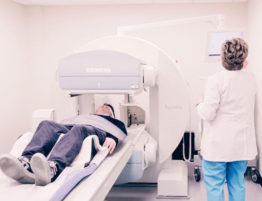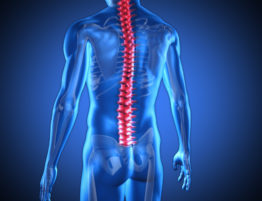If you or a member of your family has been injured in an accident involving a commercial truck, you may be unsure of what your legal options are. You may never have been involved in a lawsuit before, and you may not know what to expect. The following information provides an overview as to how a civil suit normally proceeds.
An experienced lawyers will be able to answer any specific questions you might have about your truck accident case.
Initial Steps in a Civil Lawsuit
A personal injury action arising from a commercial vehicle accident will begin with a complaint, usually accompanied by a summons. A complaint is a legal document that lays out the claims that the plaintiff (the person or business bringing the lawsuit) has against the defendant (the person or business being sued). The summons lets the defendant know who the plaintiff is, the court and how long the defendant has to respond to the complaint.
The defendant has to answer within a certain time (usually about 20 days). The answer says what portions of the complaint, if any, the defendant admits to, what the defendant contests, what defenses the defendant may have, and whether the defendant has claims against the plaintiff or any other party. Along with the answer, the defendant may include a counterclaim (against the plaintiff) or a related third-party claim against a third party.
Instead of filing an answer, a defendant may file a motion in which it raises all its defenses, asking the court to dismiss the plaintiff’s complaint. A motion to dismiss can raise the following defenses: lack of jurisdiction over the subject matter, lack of jurisdiction over the person, insufficiency of process, insufficiency of service of process, failure to state a claim upon which relief can be granted and failure to join a party.
If the defendant does not respond to the complaint within the allotted time frame, the court may enter a default judgment against the defendant. If the answer contains a counterclaim or a third-party claim, the party against whom that claim is made also has to answer within a certain time.
Discovery
In most lawsuits, the majority of the effort and time is spent on discovery. This is the process in which parties exchange documents and other information about the issues relevant to the litigation. Discovery can take four forms: written interrogatories or questions, which must be answered under oath; document production; requests for admissions, asking the other party to admit certain facts; and depositions, which are formally transcribed and sworn statements taken in front of a court reporter or other court officer. If discovery disputes arise, parties often bring motions, such as a motion to compel the other side to provide information, which the court will rule on.
After the end of discovery, in many cases, one or both of the parties will try to dispose of the case, or a portion of it, with a motion for summary judgment. Basically, the parties present to the court those material facts that are not in dispute, either because the parties agree as to the facts, or because application of the law to the facts dictates a particular result.
Resolution of the Lawsuit
The parties can voluntarily resolve all their issues through alternate dispute resolution (ADR) such as mediation or a negotiated settlement. The parties can also agree to binding arbitration. Some states require litigants to go through alternative dispute resolution in some form.
If the parties do not reach an agreement, and if the matter is not disposed of by motion, the case will go to trial. In most civil cases, either party can choose to have a jury. At trial, the attorneys present evidence and arguments for each side, and the judge or jury decides the unresolved issues. Once the judge or jury has reached a decision, the judge will order that judgment be entered for the party who wins.
Either or both parties can appeal a judge’s decision to a higher court, but it is unusual for an appeals court to overturn a judge’s decision. Also, remember that settlements usually cannot be appealed if both parties agree to their terms.
How Your Own Liability May Affect the Outcome
Even if you were careless and partly caused an accident with a commercial truck, in most states you can still get at least some compensation from anyone else who was also careless and partly responsible for the accident. The amount of the other person’s liability for the accident is determined by comparing his or her carelessness with your own. That party’s portion of liability determines the percentage of the resulting damages he or she must pay. This rule of comparing fault is known as “comparative negligence.” In most states, you cannot recover anything if your own carelessness was 50% or more responsible for the accident.
There is no formula for arriving at a precise number for a person’s comparative negligence. During negotiations, your attorney and an insurance adjuster will discuss all of the factors that might have caused the accident. Then, the question of your own carelessness will be considered, along with all the other factors that determine how much your claim is worth — such as the seriousness of your injuries and the amount of your medical bills.
Conclusion
It is hard to say how long all these steps will take in your particular commercial truck accident case. The entire process can take from as little as a few months, to as long as a few years. Generally speaking, the less money at stake, and the more issues that can be resolved before trial, the smoother and faster the lawsuit will go. Our attorneys can explain all the steps involved in truck accident litigation and can effectively guide you through each stage.
Contact us today for a free consultation.





